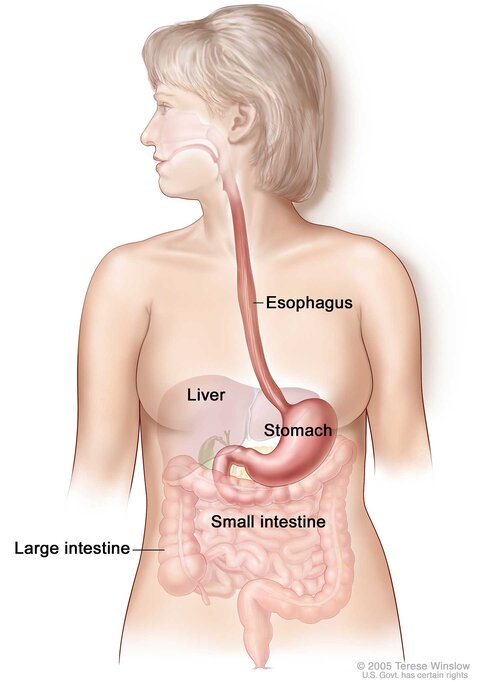General Information from the National Cancer Institute:
- Stomach cancer is a disease in which malignant cancer cells form in the lining of the stomach.
- Age, diet, and stomach disease can affect the risk of developing gastric cancer.
- Symptoms of gastric cancer include indigestion and stomach discomfort or pain.
- Tests that examine the stomach and esophagus are used to detect and diagnose gastric cancer.
Prevalence of Stomach Cancer
Cancer is a leading cause of death worldwide, accounting for 9.6 million deaths according to the World Health Organization. Globally about 1 in 6 deaths are due to cancer. Of the 9.6 million deaths, gastric cancer accounts for 783,000; exceeded only by lung cancer (1.76 million deaths) and colorectal cancer (862,000 deaths). In the United States, 2024 estimates indicate that there were 26,890 new cases of stomach cancer and an estimated 10,880 people died of the disease.
For more information, visit:
https://www.cancer.gov/types/stomach/patient/stomach-treatment-pdq
General Information from the National Cancer Institute:
- Esophageal cancer is a disease in which malignant cancer cells form in the tissues of the esophagus.
- The two most common types of esophageal cancer are squamous cell carcinoma (cancer that begins in thin, flat cells lining the inside of the esophagus) and adenocarcinoma (cancer that begins in the glandular cells in the lining of the esophagus that produce and release fluids such as mucus.)
- Smoking, heavy alcohol use and Barrett’s esophagus can increase the risk of esophageal cancer.
- Signs and symptoms of esophageal cancer are weight loss and painful or difficulty swallowing.
- Tests that examine the esophagus are used to detect and diagnose esophageal cancer.
Prevalence of Esophageal Cancer
In the United States, 2024 estimates indicate that there were 22,370 new cases of esophageal cancer and an estimated 16,130 people died of this disease. Importantly, incidence rates among white males are between 7 and 8 per 100,000 person-years, reflecting the marked increase in the incidence of adenocarcinoma of the esophagus of more than 400% in the past two decades.
For more information, visit:
https://www.cancer.gov/types/esophageal/patient/esophageal-treatment-pdq
The stomach is a J-shaped organ in the upper abdomen. It is part of the digestive system, which processes nutrients (vitamins, minerals, carbohydrates, fats, proteins, and water) in foods that are eaten and helps pass waste material out of the body. Food moves from the throat to the stomach through a hollow, muscular tube called the esophagus. After leaving the stomach, partly-digested food passes into the small intestine and then into the large intestine.
The esophagus is the hollow, muscular tube that moves food and liquid from the throat to the stomach. The wall of the esophagus is made up of several layers of tissue, including mucous membrane, muscle, and connective tissue. Esophageal cancer starts on the inside lining of the esophagus and spreads outward through the other layers as it grows.


